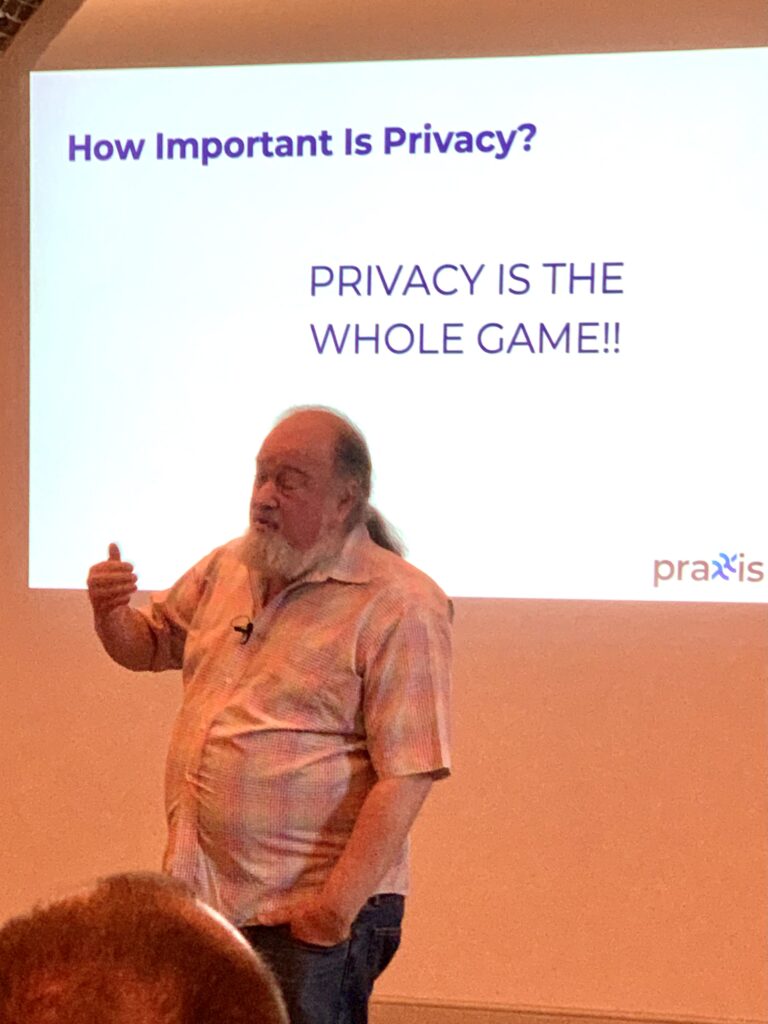Last Updated on January 17th, 2025
Intro to the Intro!
What Exactly is the XX Network?
Use Cases
Dates & Milestones
Tools / Wallets / Exchanges etcIntro to the Intro!
Rather than regurgitate words from the official bumpf, I’ll break down the components of the XX Network from memory having spent a few years involved in it. But first, a few words as to why I’m even writing this.
Back in early 2019, I was lamenting my portfolio (read ‘fantasy balances of illiquid shitcoins’) going to almost zero from 7 figures, but having survived multiple bear and bull cycles since 2013, was convinced that somewhere out there would be a project with a purpose, and also aligning with my personal values that I could, at the very least, literally buy into. I refused to believe, despite a woeful amount of evidence to the contrary, that crypto was just a huge ponzi scheme and that it could in fact bring incredibly meaningful, if not world-changing ideas to life.
You can read more about my rather bumpy crypto journey on the PatCrypt page.
It was a single tweet (or post, or whatever they’re called now) from financial commentator Frances Coppola that alerted me to the existence of David Chaum:
I had bought and read a book Frances had written about Universal Basic Income (“The Case For People’s Quantitative Easing”) which brought me to follow her. She’s not exactly pro-crypto most of the time, but following contrarian folks keeps life interesting. It was that tweet and my sudden realisation of ignorance of what felt like a person I should know about that brought me to Chaum, and the rest is history.
A little bit of research led me to what was at the time called Elixxir and later became the XX Network. Chaum was touring the world, giving speeches about the threat to democracy by the erosion of personal data privacy. He proposed technology and solutions which at the very least flipped on its head the business model of the internet that we all have grown accustomed to.
“If something is free, you’re the product.” (Paraphrasing Richard Serra, 1973) slowly became the de facto notion of the way our online lives were lived and how pretty much all the big players (Google, Meta, Twitter/X etc) make their money. From our use of their products to search, shop, plot routes to places, communicate, post cat videos etc, they build enormous social graphs of not only who talks to who and when, but an entirely accurate profile of us as individuals which is most visibly used to sell us stuff we might want. But adverts really are a mask for the sheer value of our data to these behemoths. It can be used by them or their advertisers to, for example, sway voting as was the case with the Cambridge Analytica scandal of the 2010s. Democracy itself can be affected by the whims of tech giants and coupled with powerful lobbying creates a corporatocracy, the likes of which we’ve never seen before.
At the first World-Wide-Web conference in Geneva in 1994, David Chaum demonstrated the use of his eCash technology to send the first peer-to-peer payment across the Internet, pre-dating Bitcoin by over 14 years. His system was centralised and ultimately failed to gain traction, though a few large financial institutions and software giants signed up. The concept was incredibly powerful and perhaps in another universe we would use an Internet very different to today’s because of it, whereby our private data became something we ourselves learned to value and express only with our permission. eCash solved this with payments – not only were they private, but you held the keys. It was actual cash online. Micropayments could be transacted without enormously costly and bloated infrastructure (of say, credit card companies) to traverse. We could have got used to paying a tiny bit for various activities online, and come to enjoy an ad-free web, where tracking people would be seen as almost criminal. Instead, here we are, volunteering everything about us to subsidise the ever increasingly deep pockets of tech giants in Silicon Valley (or China) who in turn will keep on innovating in whole new ways to exploit us.
It’s not just the endless data streams of our online lives ending up in giant corporations which is a worry – Edward Snowden’s revelations in 2013 showed that governments are essentially capturing and storing every single piece of data that traverses the internet, and that means everything you send and receive is being stored, for later searching – i.e. emails, instant messages, web sites visited, instagram likes, those ill-judged drunken photos etc. The ‘full take’ as Snowden called it (e.g. the Tempora system in the UK) gives intelligence agencies absolute free reign over our personal data again in unprecedented ways, without our permission or knowledge.
XX Network is David’s response to the problem of the loss of our data sovereignty, and provides an entire platform based on his successive innovations in cryptography to empower individuals and business to conduct their communications, payments and much more in absolute privacy, with the added bonus of safeguarding these messages from being cracked by quantum computing technology in the future, which can’t be said for your Whatsapp history, for example.
The XX Network had a purpose I already felt passionate about, having ‘grown up’ with the Internet and felt the ominous creep of expected surrender of our personal lives to successive unknown gatekeepers. I joined the Elixxir Telegram group on March 19th 2019 enthused to join in, but wary of doing the very thing I’ve just spoken about:
It might seem counter to everything I’ve just said that participating in early testing of the network would require me to surrender the very things I’ve safeguarded in the crypto space for getting on for 10 years, but I consulted why details were being required and applied to run a node in the early Betanet. To me, on balance, it felt like a leap I had to take.
At the outset, the XX Network team wanted to make absolutely sure that the backbone of the platform would be run from as many diverse geographic locations as possible by different people, and that those people showed a certain amount of passion for the project’s purpose. It would be the beta nodes that would be there at the launch of the actual network, and this is something that was carefully choreographed to create true decentralisation at the outset.
In August 2019, David made a trip to London to talk about Praxxis (what was then the name for the blockchain/consensus elements of the project) and I decided to attend.


There, I affirmed to the man himself that I intended to run a node and (after free beer and pizza I hasten to add!) I knew I was part of something that had serious potential to disrupt not just crypto but the real world.
Many hundreds of other potential node runners ended up applying and some passed muster (thankfully me included!) through a series of community votes. Those selected went on to build/operate nodes throughout the betanet and protonet, all the way to the successful launch of the XX Network into mainnet in November 2021. There was a lot of testing!
I remain a node operator, with my trusty machine staying mostly online for over 3 years now. Anyone can run a node now, and you can read how to do that on the official node handbook.
To the topWhat Exactly is the XX Network?
To put it simply, and trying not to get too geeky, XX Network is an infinitely scalable and decentralised platform for privacy in messages, payments and/or other data.
It combines two key components – the blockchain and the ‘cMixx’ mix network. Nodes that participate in the Network run both of these component parts, though each can be interacted with separately by applications in different use cases.
Getting a bit nerdy here, but useful so you understand the significance of Chaum founding the Network, both the concepts of blockchains and mix networks are in large part (and in total in the case of the latter) the actual invention of David, with his 1982 paper “Computer Systems Established, Maintained and Trusted by Mutually Suspicious Groups” outlining almost all the components of a blockchain, and his 1981 paper “Untraceable Electronic Mail, Return Addresses, and Digital Pseudonyms” outlining the first mix network concept. XX employs an implementation of this called cMixx (derived from cMix, confusingly!) which uses an innovation called precomputation to speed up the processing and delivery of data across the network. David is literally foundational to all cryptocurrency existing in its present form and very few Bitcoin OGs would disagree with that.
David himself has always jokingly shied away from answering the question of whether he is Satoshi Nakamoto himself.
Anyway, back to the nitty gritty. Nodes that are part of the XX Network are incentivised to continue being so by earning the native coin, ‘XX’ for processing not only blocks of transactions on the blockchain but ’rounds’ of data processing in the mix network. They cannot run one without the other as the consensus is tied to both being in operation.
The blockchain is derived from a highly modified Substrate implementation, which is its own standalone ‘Layer 1’ network, so is not interdependent on any other cryptocurrency or project. (It is not a parachain). That means it can also perform functions much like other Layer 1s such as smart contracts, which in turn enable the use of ‘wrapped’ tokens through bridges, which are ubiquitous in the crypto space.
The same system which powers the blockchain also provides the basis for the democratic and decentralised governance of the Network itself, which permits individuals to cast votes using XX to back their stance on decisions about various network parameters to update/add or remove and/or other decisions to take in case of developments, changes or emergencies. These are visible on the official explorer site for anyone with XX holdings to interact with.
The mix network (‘cMixx’ – the ‘c’ stands for Chaum!) provides a data layer for messaging which eradicates the traceability of communications by passing messages (mixing) through a series of nodes. This completely obfuscates the metadata by stripping out the IP address of sender/receiver and the date/time of messages, so that any bad actor sniffing network traffic would find it impossible to know who is sending what to who and when. Messaging doesn’t necessarily mean person-to-person communication, this can be data packets of any type and could be machine-to-machine for enterprise use. The cMixx Dashboard shows how many messages are being processed currently, which at the moment with around 370 nodes, is about 3,000 per second, which is about twice as many operations as American Express performs. With more nodes, more capacity will be added, as the system scales linearly.
Quantum Resistance
The Network has been designed to be resilient against the emergence of powerful enough quantum computers that would break traditional elliptic-curve encryption, the likes of which Bitcoin and almost all other cryptocurrencies use. At present, this is through the use of ‘quantum safe’ wallet key pairs, generated using a technology called Sleeve (invented by founding members of the XX Network). Essentially, the quantum safe key proves ownership of a traditionally generated address in the instance of the traditional encryption method being cracked.
Quantum computing is becoming a frequently discussed topic, with governments mandating the use of Post Quantum Encryption techniques for their own IT systems for future proofing. The feeling is there will be breakthroughs within the next decade, and with the rise of quantum computing power, the possibility of not just cryptocurrency but a lot of the infrastructure of the internet and anything you store in the cloud being broken, cracked and/or exposed is a very real one.
Recent chatter about still-theoretical technologies such as room-temperature superconductors highlight the potential leap forward such materials would have in the realm of quantum, which could be an enormous wake-up call for the industry, especially if entire networks collapse because of having zero safeguards when private keys are instantly cracked and funds moved. Bitcoin is the largest honeypot and the incentives to be the first successful adversary are huge. The XX Network is one of only a small handful of mindful crypto projects actively employing Post Quantum Encryption techniques and open sourcing any of the advances for other networks to use.
Open Source Platform
Everything that makes the XX Network function as it is today is open-sourced, so that anyone can verify the mechanics of how various systems operate, and help to continue its development through, for example, checking for security issues or creating their own app/dApp.
Developing against the mix network has been made easier through the production of the xxDK (the xx Development Kit) and incentives of up to 2,000,000 XX are currently in place through various grants to produce certain types of dApps.
The Foundation keeps track of various repositories in the Network which you can see here.
To the topUse Cases
This is absolutely not an exhaustive list but will give you an idea of what has been experimented with thus far and some of the ideas that are waiting to spring into life!
Postage
The XX Network is designed with two parts – the blockchain and associated coin (XX), plus the cMixx mix network. A majority of real-world use cases by design are through large scale use of the cMixx network to provide privacy for individuals and businesses for a multitude of reasons and situations.
Once this is achieved, the reason for the other part existing becomes more clear. Large scale use of the cMixx network will require payment in the form of postage, initially through a custodial service the XX Network Foundation will provide. Providers of privacy solutions will purchase XX Coin to keep private data flowing. Validators will earn XX coin from the cMixx network being used in this way, as well as for processing blocks/cMixx rounds. The development of the postage system is a top priority presently, with some details recently announced.
One good example of the cMixx network being potentially used in bulk is through the implementation of a privacy centric CBDC by a nation state. eCash 2.0 has been developed by IBM, utilising the XX Network’s mix network with its privacy giving powers in mind, and has been in trials with the Swiss National Bank. You can read more about that here.
Private Messaging Apps
cMixx is built in a way that makes this a primary use case. Short messages or small photos/audio clips, such as those used in instant messaging apps are a great fit to traverse the network quickly and privately. By stripping out metadata completely, as well as end-to-end encrypting all message content, a private messenger built with cMixx can claim to collect or reveal absolutely zero data about the people using it, which is unheard of, even with some of the best known messengers available.
In January 2022, the XX Messenger was launched in major app stores as the first flagship demonstration of such a mass market privacy product. It was received well with plenty of good press at the time but ultimately hasn’t become the development priority. It worked reasonably well for a first product as development goals shifted.
Group Messaging / Social Network Apps
The development team at Elixxir took the experience of producing the XX Messenger and started work on a group messaging platform akin to a Discord or Telegram which was first called Speakeasy, then Haven, and now a separate team continue the work, calling it Phoenixx. It is currently in Alpha (as of Q2 2024, Beta coming soon). Haven will continue to be developed separately.
Ultimately what is released supersedes the XX Messenger, firstly because the functionality of person-to-person messaging is replicated in this software, so makes it redundant in the other, and secondly because it’s being built on a developer friendly WebAssembly/Javascript framework for access to the cMixx network which will make it easier for other developers to build with.
Crypto Transaction Privacy Apps
With the rise of analysis companies using as many data points as available to track users in the crypto world, there is a need for apps which help safeguard the construction of individual profiles. Proxxy was released as a standalone app which connects to the cMixx network and allows you to interact with Metamask completely privately, so that any relay servers talked to cannot use your interactions with them to construct such a profile of who you are, your addresses and balances.
Further development of Proxxy is planned for seemless interactions with major wallet providers. A recent demonstration showed a WebApp version of Proxxy interacting with Polkadot.
Voting Apps
David has been involved in various voting ideas (see RSVoting.org, VoteXX.org and 7th Estate) which in some cases would have a shoe-in to cMixx. His latest idea to help with global warming, Astrocool has a whole-planet view on voting in several referenda. Implementing the chosen protocol for this over cMixx seems like a no brainer.
Other projects can of course use the cMixx network for democracy based activities safe in the knowledge that the actions taken are not being tracked. The recent Worldcoin grant awarded to XX to implement VoteXX technology in their ecosystem is a great example.
Use Cases with Grants Available
There’s a plethora of grants in XX Coin available for certain projects to be undertaken. The programme was given a fresh lease of life in January 2024 and individual grants of up to 2,000,000 XX Coins are available for research/development projects.
The community can also propose treasury spends to be voted on by the council and have their project funded that way.
If you are a competent developer and looking for an in-road to the project, get in touch with any Foundation or council members who will be happy to assist you.
Frictionless Trading
A use case for the blockchain side of the Network is implementing bridges and wrapped tokens so that ultimately obtaining or trading out XX is a frictionless experience for people and/or machines. Work started with putting XX on the XRPL Ledger’s decentralised exchange, via an IOU token and the next priority was an Ethereum bridge for a wrapped XX coin (WXX) which launched on 16th July 2024. The ultimate goal is to have simple crypto and fiat gateways to the coin with decent liquidity and no friction across multiple exchanges and ecosystems.
Staking / Governance
By safely locking your native XX Coins away and using the blockchain’s nominated Proof of Stake system, you earn interest on those coins which compound over time. The current rate is visible on the simple staking tool.
Whilst staking (or when just holding) you can also partake in the blockchain’s built-in governance features to elect council members, vote on referenda to do with changes to various parameters of how the network functions such as the economics and participate in other newfound democratic processes.
To the topDates & Milestones
This is not definitive by any stretch as there have been extended periods of repeated activities such as tweaking the coin economics (prior to mainnet), various node related tests and updates, documentation and all kinds of other behind the scenes stuff that never gets announced or talked about but definitely happened! If however, anyone involved wants to add to this for clarity, I will happily insert updates.2016
David Chaum publishes a paper for his ‘cMix’ network design, after his breakthrough on precomputation, speeding up mixing for consumer level privacy applications. The later implementation which contains updates of this original ‘cMix’ for the XX Network is known as cMixx (with two x’s!).
2017
Elixxir was founded, which is the precursor to what became the XX Network. A team was formed and along with Jim Dolbear, David brought in long term collaborators Ben Wenger (as VP of Architecture) and Rick Carback (as VP of Software Engineering) of what was described as his ‘stealth’ blockchain project. Pre-seed funding occurred, which Jim Dolbear has mentioned as being $50,000 from an undisclosed entity.
2018
March-May: A closed-group Alphanet starts testing the team’s cMixx implementation.
August: David hints at something big coming in his keynote at Distributed 2018.
September: The ‘Elixxir cryptocurrency’ (later to be combined with Praxxis to form the XX Network) was announced.
October: Chris Larsen (co-founder of Ripple) invested into the entity ‘Mixxlabs’ according to Crunchbase, along with H&D Company Pte Ltd of Singapore. Press releases went out, resulting in articles like this. Another known investor is OG Bitcoiner Roger Ver.
Throughout 2018 & 2019, David tours the world presenting the XX Network’s vision of the time. The locations include: Seoul, Miami, Lisbon, London, Zurich, Osaka, Las Vegas, Tokyo, Berlin, Paris, Tel Aviv, Athens, San Francisco and quite a few more!
2019
January: The Betanet Node selection process was unveiled, with 6 quite detailed steps for potential node runners to go through. This ensured a fair geographical spread and that multiple nodes should not be run by the same entities. Coupled with an extensive application process, it also meant that folks had to show some understanding and passion to do with the project’s intentions.
June: 600 Betanode applicants were selected after a long process of team and community vetting of applications. Operators were placed into multiple colour-themed teams. For example, I was selected into the blue node group, which were the first to go live. The selection process continued into 2021.
November: An Alpha version of the XX Messenger is made available to folks who wish to run it in a test environment on their phones. It was available until April 2020, and ran on the early Alphanet.
2020
January: The first community sale of XX Coin took place, delivered as a locked ERC1404 token until Mainnet in November 2021 where the initial distribution was hard coded into the Genesis block. The ERC1404 token was also used for payments to Alpha/Betanet node operators which were realised in native coin at Mainnet as well. Further sales continued throughout the year and into the next, with prices ranging from $0.32 – $0.80 ($1.60 with 100% bonus when interacting with XX Messenger). Due to uncertainty with the regulatory environment within the USA, all US persons were prohibited from buying in and/or operating a node with compensation during this period, with a KYC process in place for all participants. For further details on all the initial sales, see this page.
April: It was announced that the sales of XX Coin up until that point had raised $9.7m. The Alphanet and XX Messenger Alpha were retired.
June: The Betanet launches which ultimately runs for just over a year, during which are multiple updates and bug fixes in preparation for mainnet. The first node to come online was from Seville, Spain. The second… was mine!
2021
April: The first release of the xxDK was made, open sourcing the code to connect and interact with cMixx in a bid to encourage developers during Betanet to create dApps. The newly redesigned and re-coded version of XX Messenger is available to test.
August – November: The Betanet became the Protonet with nodes onboarding in tranches to help iron out bugs as they presented themselves.
October: Source code for the launch of the network is released prior to Mainnet. Regional Multipliers, a (later) mildly controversial feature are devised and implemented so that nodes are rewarded proportionately to the regional importance and performance.
November: The XX Mainnet is launched over the course of 48 hours with the first block being produced at 7:01am UTC on November 17th. Out of caution, coins were initially prohibited in the code from being transferred, so trading or any wallet-to-wallet transfers could not occur – this went on for 6 months.
2022
January: XX Messenger is released, showcasing truly private messaging between mobile devices. Some news outlets carry the story.
April: The XX Foundation was formed and announced as a Cayman Islands Foundation Company, to promote and grow the network with board members independent from the main development companies contributing up until then.
May: The community cast votes to enable transfers of the coin, bringing in code to enact that by consensus when the vote was passed. This finally allowed OTC trading of XX Coin prior to an exchange listing.
June: XX Privacy Grants become available (and still are) for developers to earn XX in return for developing dApps.
August: XX Coin goes live on MEXC, the first official exchange listing after an unofficial exchange (CITEX) decided to list the coin without team involvement in July.
October: Speakeasy, a completely private, open source group messenger in webapp form is released from the Elixxir company in Alpha.
2023
Q1: Many iterations of Speakeasy were released, adding features and fixing bugs. Twitter spaces were made more regular and outreach to find synergies with other projects intensified.
June: After several months in development, the Proxxy desktop app is launched, making metamask transactions private at the network layer.
August: XX on the XRP Ledger is announced, starting the ball rolling on a series of bridges to make wrapped XX a reality for for various chains and DEXs on those chains. Liquidity problems stopped development on some projects. A big announcement covered this and many other topics the community were keen to hear about at the end of the month.
September: The first version of Postage is announced which paves the way to increase monetisation of the network.
October: An XRPL grant application and accompanying proof-of-concept is submitted, the outcome of which will be known next year.
November: Echoexx is announced (now Phoenixx). A paper describing an update to cMixx is also published. David unveils his Better Than Money system, based on eCash 2.0 which uses the XX Network’s cMixx+.
December: Mário gave a taster of current research and Echoexx (Phoenixx) released a teaser video. Interviews and the keynote speech from David’s recent travels are published (1, 2, 3, 4, keynote.)
2024
January: The XX Research and Development Grants programme has been rebooted, simplifying the process of applying, increasing potential awards and broadening the scope of potential development projects. The Q1 Roadmap was also announced, along with the first new grant awardee for an EVM bridge. At the end of the month the first Alpha of echoexx (now Phoenixx) was released.
February: Worldcoin awarded 3 grants to XX Network developers to enhance their ecosystem’s privacy and governance. The Carbon Browser announced several forthcoming XX Network integrations.
March: David Chaum spoke at a conference based in Ankara, Turkey. A hackathon was organised by a community leader in India. Wrapped XX was minted into existence for later listing in CEXs and DEXs.
April: The Foundation published the Q2 Roadmap. Biconomy and Coinstore listed WXX and Coinstore has also listed native XX. Uniswap also now lists WXX. Mário Yaksetig was interviewed by YouTuber Crypto Eri. Shortly after an interview with Turkish influencer Burak Kesmeci, David and Jim took to the road for the first leg of conferences, taking in Paris, Amsterdam and Dubai.
May: The Turkish community embarked on a series of educational events. The Team Multiplier programme started to wind down. Echoexx rebranded to Phoenixx. Biconomy listed Native XX.
June: Several key members of the Foundation and dev teams visited Consensus in Austin Texas and made connections/received interest that may be published when made public. Rick won a hackathon there utilising cMixx inside a ‘Homeless Holdem’ project. Lbank listed Native XX.
July: Runtime upgrade 206 rolls out on July 5th after a public referendum backed the changes. The long anticpated XX/WXX Bridge launches. The African XX Network community hosted a busy web3 summit event. David Chaum and Vitalik Buterin speak together at a privacy-themed conference in Tokyo.
August: The Network Anonymizer Worldcoin grant project, using cMixx for privacy, was completed and demonstrated to the Worldcoin Foundation.
September: The private group messenger known as Speakeasy is rebranded to Haven.
October: The 2024 Q4 Roadmap was released.
November: Bounties were awarded for work completed during Hacktoberfest. The XX Network turned three years old (from mainnet launch) on 17th November. David spoke in a video to celebrate the milestone.
December: Further bounties were announced, and some attainted successful applicants. A crowd sale of wrapped XX (WXX) to provide liquidity for DEX listings started in mid December and runs until February 2025.
2025
January: The Q1 2025 Roadmap was released.
To the topTools / Wallets / Exchanges etc
These are on their own page now.
I imagine you probably have a few more questions at this point! Browse the FAQs below, or pop over to the front page for all the latest news.
FAQs
- What is the XX Network?
- What’s New in the XX Network?
- Is XX Coin a Privacy Coin?
- How Much and When Were the Original XX Coin Sales?
- What is cMixx? Is it Different From cMix?
- Is David Chaum Still Part of the XX Network?
- What is Project Tourbillon?
- What is the Circulating Supply and Market Cap of XX Coin?
- How Can I Buy XX Coin?
- How do I Stake XX Coins?
- When Will XX Be Listed on Another Exchange?
- Is The XX Network a Polkadot Parachain?
- How Do I Get XX Coin Funding for a Project, Initiative or Idea?
- Can I Run a Node in the XX Network?
- Are There Any Bounties Available?















